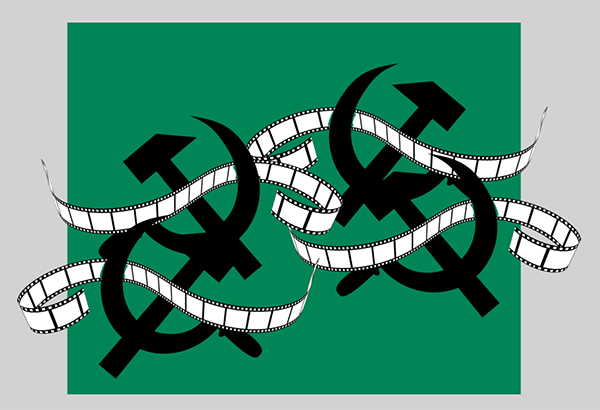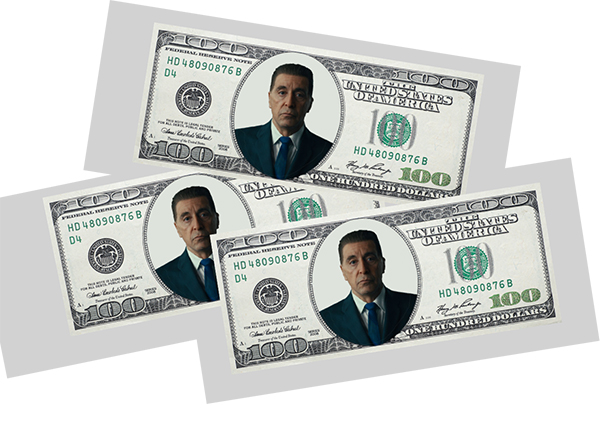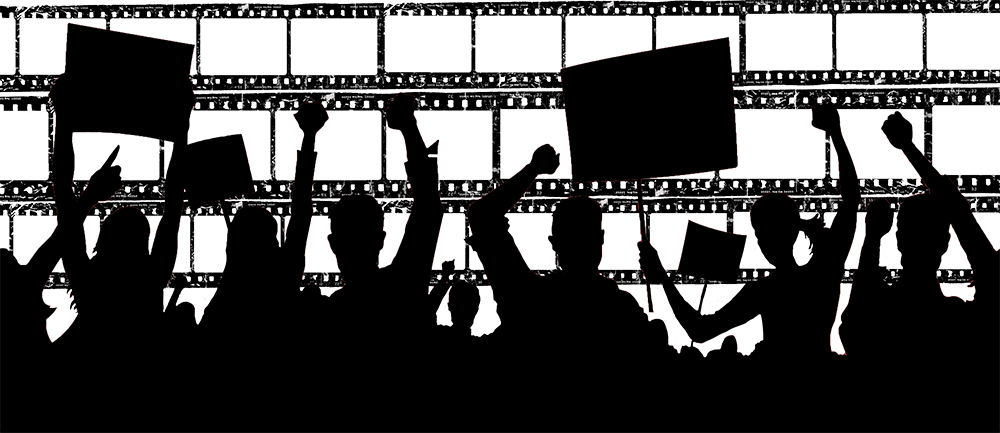In recent years and months, organized labor has moved to the forefront of our collective consciousness. In response to the coronavirus pandemic, essential workers have planned strikes against companies like Amazon, Target, and Instacart. Workers like truck drivers and nurses have warned that anti-union actions have been stepped up during the pandemic, and Amazon-owned Whole Foods was recently revealed to have a “heat map” of stores most likely to unionize.
The pandemic and its effect on low-income essential workers has made labor organizing more pressing than any time in recent memory. Workers’ health and safety literally hang in the balance. So why is it that only 11.6% of jobs were represented by a union in 2019? Why do corporations like Delta Airlines fight so hard against unions that they would release propaganda like one such poster telling workers to “put their money towards [a gaming system] instead of paying dues to the union?” And more importantly, why does it work? Why are so many workers opposed to unions, seemingly against their own interests?
Popular media has a massive effect on how we view the world around us. Films have depicted labor unions both positively and negatively over the years, perpetuating many of the stereotypes we think about when we think about unions. Think of the corrupt union boss; the greedy corporate leadership; the heroic striking workers. These images, rooted in reality, have been simplified and amplified by movies. Some of these films are meant to push an agenda, and some just show their own unconscious bias. In any case, films can play a major role in shaping public opinion about organized labor.

images by Hailey Blum
https://www.youtube.com/watch?v=X7mXhFkdQFs
On the Waterfront (1954)
One could argue that this movie is the archetypal appearance of the “corrupt labor leader” in the media. The story is a classic piece of Americana; Terry Molloy, a dockworker caught up in the mob, is horrified when fellow worker Joey is murdered by mob boss Johnny Friendly, president of the local. The dockworkers are completely controlled by their tyrannical union, which decides who gets to work and who has to go home every morning. Lazy workers get to lay around all day while hard workers break their back for nothing. “I’m poorer now than when I started here,” one worker says. The cops know they can’t get anything out of the union, because all the dockworkers are D&D, deaf and dumb. If they talk, they’ll be blacklisted from every dock in town.
Terry gets served with a subpoena by the Waterfront Crime Commission, and after much thought (and after becoming romantically involved with Joey’s sister Edie) he decides to testify against Johnny Friendly, breaking the union’s iron grip on the dockworkers and freeing them from the crushing weight of the mob.
To put it lightly, unions are not portrayed very favorably.
To give some context: in the early years of the Cold War, the “Hollywood Blacklist” ended the careers of anyone in the entertainment industry who was suspected to be a communist or communist sympathizer. The director of On the Waterfront, Elia Kazan, testified before the House Un-American Activities Committee and named multiple directors, actors, and playwrights who he believed were communists, ending their careers. Organized labor hit a little too close to home for anti-communists at the time, which might explain the great lengths Kazan goes to in order to highlight his fictional union’s corruption, violence, and extortion.
The film deals less with the workers’ plight and more with Terry’s personal and romantic development. It seems to care little for the workers’ autonomy to decide their own future, instead casting Terry as the hero of the story, the rugged individualist who makes it his mission to end the union’s reign of terror. There is no mention of solidarity in the film’s message, nor the importance of collective action. Instead, it’s Terry against the world. The corporation for which the longshoremen work isn’t even mentioned, and the police are made out to be the workers’ friends. (Even a cursory glance at labor history shows how untrue this is.)
All in all, On the Waterfront single-handedly amplified most of the negative stereotypes we have about unions today. That’s without mentioning the nauseating misogyny and outright sexual assault present in some scenes. Considering all that, please don’t watch this movie. Trust me. It’s bad.
https://www.youtube.com/watch?v=fDe80G96K1Q
Salt of the Earth (1954)
What a breath of fresh air this movie is. Released the same year as On the Waterfront, the two films could not be more different. Salt of the Earth wears its radical politics on its sleeve.
The movie is based on a real-life zinc miners’ strike against the Empire Zinc Company, based in New Mexico. The film revolves around the miners and their wives in the fight to improve working conditions and sanitation in their company-owned housing. When the company threatens the strikers with legal action, the miners’ wives take up the picket line. Eventually, after threats, arrests, and the eviction of one of the families, the strikers win after gathering support from the international union and the local community.
The film is notable in that it focuses on social justice and feminist politics, unusual for movies at the time. The miners are mostly Mexican American, and the main protagonists are the women who stand up to the company and the male-dominated union. They succeed in opening up the union to all genders, and force the company and their husbands to take their needs seriously. For a movie made in 1954, it’s surprisingly progressive in its handling of race and gender. It emphasizes the need for racial and gender solidarity, and pits the working-class heroes against their common enemy, the company. Also notable is the fact that the majority of the actors were actually miners themselves.
The writer, producer, and director of the film were all blacklisted from the Hollywood establishment for their alleged communist views. It was supported by the International Union of Mine, Mill, and Smelter Workers, and the movie was considered “subversive” and even condemned by the U.S. House of Representatives. Despite (or maybe because of) the difficulties of its production, Salt of the Earth stands even today as one of the most radical movies ever made, and its unabashed support for the power of unions is remarkable to this day.
https://www.youtube.com/watch?v=XthLQZWIshQ
Sorry to Bother You (2018)
Sorry to Bother You is a great representation of what it’s like when a company tries to divide its workers. Cassius Green works for the telemarketing company RegalView, where he learns to use a “white voice” to sell to white customers. He quickly gets promoted to a Power Caller position, while the rest of the workers unionize and strike for better working conditions. Cassius crosses the picket line to his new, high-paying job while the rest of his coworkers strike day after day. He eventually discovers some unseemly actions by the company (no spoilers) and decides to rejoin the union in the fight against the company.
The film, written and directed by activist Boots Riley, offers a not-so-subtle critique of capitalism and its effect on our lives. One company referenced in the film, WorryFree, literally signs workers into lifetime contracts in exchange for free housing and food—essentially a cushy version of slavery. The company is extremely popular in the Sorry to Bother You world; the film’s popular media portrays it as a fun alternative to wage labor rather than the dystopian nightmare it is. Cassius’s uncle even considers signing his life away to the company in order to escape his crippling debt.
Sorry to Bother You is one of those rare modern-day films that actually shows unions in a positive light, and more importantly, shows the workers winning. The workers have the agency and the power to actually effect change. That alone makes Sorry to Bother You one of the more radical films released today.
https://www.youtube.com/watch?v=WHXxVmeGQUc
The Irishman (2019)
The corruption of the mob-controlled International Brotherhood of Teamsters is on full display in The Irishman, told from the perspective of mob hitman Frank Sheeran. Frank begins as a truck driver for a steak company and quickly moves up the ranks of the Teamsters, starting with petty theft and rising to inter-union sabotage and cold-blooded murder.
The film depicts the IBT as a kind of fanatical cult of personality around its president, Jimmy Hoffa. The union is a hierarchical web of mob bosses and corrupt labor leaders. Crucially, the workers themselves are almost never shown, and they have no agency to affect the union that supposedly represents them. When Hoffa yells “Solidarity!” to a screaming crowd of Teamsters, it feels like a sick, ironic joke. The union appears to devote most of its time to dealing with Attorney General Bobby “Boobie” Kennedy, doling out millions of dollars from the pension fund to mafia enterprises, and sabotaging corporations and rival unions alike.
To be sure, Jimmy Hoffa wasn’t an ideal labor leader—just read his Wikipedia page. The Teamsters were marred by corruption for much of their history, and the film doesn’t shy away from it. But if your only exposure to labor unions was from hyper-violent, double-dealing depictions like this movie, of course you’d have a negative opinion of them. To be fair, though, The Irishman doesn’t make the case against unions, but rather against unions like the one shown in the movie. Bottom line: if your union employs hitmen, run.

Anti-union corporate films
Corporate anti-union propaganda is the most immediate form of anti-union messaging in most people’s lives. If you’ve worked for a medium-to-large corporation, chances are you’ve seen a film like these.
https://www.youtube.com/watch?v=AQeGBHxIyHw
An Amazon training video encourages managers to actively seek out any “potential warning signs” of organizing, including: employees using words like “living wage,” “steward,” “grievance,” or “contract;” an employee speaking on behalf of their coworkers; employees suddenly spending time together; employee interest in company policy or benefits; or a “change in passion.” If this feels more than a little dystopian, it is. Amazon is so afraid of labor organizing that they will prevent even friendly relations between coworkers if it seems like they possibly might unionize. Amazon works to actively discourage solidarity on every level, and this video proves it.
https://www.youtube.com/watch?v=p8ZSNDsz5vg&list=PLKHtyfkr-npQkxFSHXL4HvAxl1jxG2A1x&index=16&t=227s
Target’s ridiculous video claims that the corporation and its workers are a “family,” and argue that union representation would break the line of “direct communication” between them. This trope comes up time and time again in these kinds of anti-union videos. Ironically, Target used union actors to film the video, but they won’t mention that. They also hammer the idea that “a union is a business with no product to sell,” claiming that unions are just greedy money-grubbers looking to increase their membership rolls. Sound familiar?
https://www.youtube.com/watch?v=SKTFid4_vxc&list=PLKHtyfkr-npQkxFSHXL4HvAxl1jxG2A1x&index=1
Delta Airlines’ “Don’t Risk It, Don’t Sign It” video is pretty unremarkable and vapid; I can’t imagine it would actually convince anyone. It continues the theme that the business is a “family,” claiming the union “is attempting to disrupt the very culture that makes Delta different.” This erases the reality of the employer-employee relationship, of course, purposefully ignoring the fact that anyone who controls your livelihood controls your life. Does that sound like a happy family to you?
https://www.youtube.com/watch?v=H0VQfdpLgTE&list=PLKHtyfkr-npQkxFSHXL4HvAxl1jxG2A1x&index=2
A strangely sitcom-like FedEx anti-union film features a barbeque between “friends” (they don’t seem to like each other very much). The guys sit at the grill, and the cook gives the other guys the “straight talk” about the union (i.e. that it’s bad). The women in the kitchen (yes, seriously) talk about the union drive, as the cook’s wife shows the other woman a FedEx corporate video with scary narration and three spooky words: “RISKS / CHANGES / UNCERTAINTY,” referring to some of the possible effects of a union. As an effective piece of propaganda, it’s pretty ineffective. But as a cheesy sitcom? 10/10.
https://www.youtube.com/watch?v=Eiwqo4sdPiQ&list=PLKHtyfkr-npQkxFSHXL4HvAxl1jxG2A1x&index=3
Unions are a “tricky subject” in a Lowe’s video, which trains managers how to talk to employees who “often think they know more about unions than they really do,” and implores them to report any union activity to the higher-ups ASAP. It also engages in some revisionist history, claiming that unions are a thing of the past, and “employee-friendly companies” and worker protection laws make organized labor obsolete. It repeats the “unions are a business” lie that the Target ad focused on, and it encourages coworkers to snitch on each other. Lame.
https://www.youtube.com/watch?v=ElK3Z122OXg&list=PLKHtyfkr-npQkxFSHXL4HvAxl1jxG2A1x&index=4
A K-Mart video needs no explanation. Just listen to the opening song and you’ll want to unionize.
https://www.youtube.com/watch?v=k5FKn3sVOx4&list=PLKHtyfkr-npQkxFSHXL4HvAxl1jxG2A1x&index=14
An anti-union consultant video, aimed at management, uses fear mongering and scare tactics to prevent unions “plotting against [their] business” from gaining a foothold. It tells the “shocking truth” of how labor unions want to “destroy the credibility of your business” and “stop at nothing” to “destroy you personally.”
Again, these corporate films are what most people will have exposure to, as management will often show these to employees to discourage union activity. That means that these types of movies have the most impact out of any films on public opinion of unions. If your company takes time out of the day to show you these movies, wouldn’t that stick with you?
https://www.youtube.com/watch?v=m36QeKOJ2Fc
American Factory (2019)
American Factory is a documentary that tells the story of the Fuyao glass factory in Moraine, Ohio, where a GM factory had closed years prior. It shows the perspective of the Chinese business owners and American workers in their struggle to get the factory running and to get their livelihoods back, respectively.
The story is not a good one for the workers. Some of the glass makers have to stand in 200 degrees Farenheit rooms for 10 minutes every hour. A glass inspector compares her experience at the GM factory to her experience now: “At General Motors, I was making $29 and some change an hour…at Fuyao, I make $12.84.” She laments her inability to buy her kids shoes, and recounts how she lost her home and car when the plant closed. A forklift operator says she has “struggled to get back to middle class again…I’ve been living in my sister’s basement.”
The company is dedicated to stamping out any pro-union activity. At the factory opening, Ohio Sen. Sherrod Brown gave his support to a union vote; the vice president of the company tells another worker, “I’m gonna have to kill a senator…I’m gonna take those big scissors and cut Senator Brown’s head.” The company chairman says to other executives, “If we have a union, it will impact our efficiency, thus hurting our company.” That kind of sentiment is widespread at Fuyao Glass.
When the workers do try to start a union drive with the United Auto Workers (UAW), the company does everything they can to stop it. One worker, who walked around the factory with a “UNION YES” sign, was escorted off the premises by private security. “Sometimes you’ve gotta be Sally Field,” he tells the cameras—referencing the famous scene in the film Norma Rae when the main character holds up a “UNION” sign in a textile mill. The company brings in an anti-labor consulting firm to scare the workers and warn them about the “dangers” of a union, using many of the same tactics used in the corporate videos referenced before.
The film is the perfect example of how anti-union stereotypes have seeped into everyday workers’ minds. Many of the workers are skeptical of the union, worrying that they will not benefit and lazy workers will get paid more for doing nothing. They worry that the company will shut down the plant due to inefficiency, and think, “I’m doing well enough now. Why do I need a union?” They consider themselves lucky to even have a job, and the idea that they deserve better feels overindulgent. When the pro-union workers try to convince them, they’re concerned about bringing a third-party into the workplace. Nearly all of the tropes mentioned in this article make their way into the Fuyao workplace.
Devastatingly, the union vote failed 886–441. Today, presumably, the workers are in the same position they were when the documentary was filmed. One can only hope that one day, Fuyao employees will get back to where they were even ten years ago, let alone improve their conditions to keep up with the rising cost of living.

What does it all mean?
Today, union membership is lower than it has been in decades. Union petitions and elections are occurring at lower rates, too. To be fair, strikes of all kinds—work, school, and rent—are on the rise during the COVID-19 pandemic. But unions are still in arguably their worst state since the beginning of the modern labor movement.
The next time you hear the company line on unions, or hear a coworker or friend repeat a negative stereotype about organized labor, ask yourself: why? Where are they getting their ideas about unions? How much has our collective attitude about organized labor been shaped by the media? And in the information age, it’s even more important to be critical of the media we consume. It shapes us more than we know.





